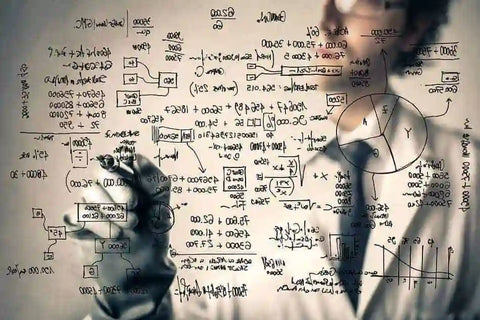How To Detect Image Manipulation in Scholarly Research Papers
Images can be incredibly valuable, even indispensible aspects of a scientific or academic research paper. Modern forms of photography enable researchers to capture and share digital images as narrowly focussed as a microscope lens or as expansive as the galaxy. A photograph can instantly clarify complex textual descriptions of research methods or show readers striking results with an immediate and memorable impact. Many of today’s academics and scientists would argue that the use of images is essential for effectively reporting and disseminating advanced research, but with a vital qualification. To have value, the images in an academic or scientific article must represent with accuracy and precision the realities – procedures, conditions, observations, analyses, results and more – of the research described in the paper.
Unfortunately, this kind of image integrity is not always what readers of research papers encounter. Technology generally has negative consequences as well as positive ones, and the technology associated with digital photography is no exception. Digital images can easily be manipulated, as anyone with a smart phone or a version of Adobe Photoshop well knows. More often than not, the kinds of image manipulation detected in research papers are inappropriate rather than deliberately fraudulent. Most authors want the images in the documents they write to be attractive and appealing to readers, and most researchers want the images in the studies they publish to show exactly what they should show with clarity and without distractions. Such concerns lead scholars to clean up, crop and generally ‘improve’ the images of their research before sending them along with a manuscript for publication. Often these manipulations violate journal guidelines and the images would have been better had they not been altered, but the changes have no significant effect on the results reported in the paper, the interpretations offered by the author or the ability of future investigators to replicate the study.
Image manipulations that do have an effect on the results reported and the researcher’s interpretation of those results constitute academic or scientific fraud. Intentional misconduct of this kind may include adding objects to an image or removing them, combining two images into one, or using images that have nothing to do with the research reported in a paper while claiming that they do. Authors who manipulate and plagiarise images in this way may be relatively rare, but they create serious problems for readers and researchers as well as reviewers and proofreaders. When fraudulent research slips past journal proofreaders and peer reviewers and is published, it becomes part of the scholarly record, is consumed by readers and may be used and cited in other research papers. If research papers are retracted due to falsified images and fraudulent research, papers that cite or otherwise make significant use of the manipulated images can suffer the same fate. It is therefore imperative for every researcher to keep a wide eye open to the possibility of image manipulation in the published papers consulted during a research project.
Detecting image manipulation can be extremely difficult, however. The best image manipulations are virtually undetectable and the most sophisticated means of how to detect image manipulation in research papers and elsewhere tend to be available only to the security and law enforcement agencies that police such matters. There are, however, a number of relatively effective ways in which readers and researchers can detect less-than-perfect image manipulations using their own eyes and common or readily available software and online tools. A careful visual examination to authenticate each important image in a research paper is a good way to begin. Watch for physical realism and consistency in shadows and their relation to light sources, in perspective and angles, in scale and the sizes of individual objects and their parts, and in textures and patterns. Noticeable edges or glows or odd or abrupt colour transitions around objects or small areas of an image may suggest that elements have been introduced or removed. Use your research experience as you assess images, reflecting on similar images you have encountered in reliable publications. Does the similarity indicate authenticity? Is the image too much like another one you have seen elsewhere? Is anything about the image unexpected or inconsistent? An image that seems suspicious may be, but advanced research also investigates wondrous phenomena and generates surprising results, so further investigation is usually in order before deciding whether an image in a research paper has been manipulated in fraudulent ways.
Fortunately, the very software that empowers authors to manipulate images for good or ill also helps readers detect some forms of image manipulation, though all such tools should be used with caution, reflection and the recognition that the results can be difficult to interpret. Photoshop, for instance, may leave traces of how an image was edited in the image’s metadata, so this information should always be checked for the previous use of Photoshop as well as other image-editing programs. Photoshop’s brightness and contrast bars can also be helpful by revealing inconsistencies in pixilation patterns that might be traces left by image manipulation. In addition, Photoshop’s droplets and actions are applications designed specifically for the forensic analysis of images to detect various kinds of editing and manipulation. Adobe Bridge and ImageJ allow readers to view, organise and compare large numbers of images simultaneously, which can be immensely helpful for detecting image manipulation. Even PowerPoint can be useful for detecting image manipulation since its picture reset tool can reveal underlying images that might have been used to create a suspicious PowerPoint image. Google and other search engines can be of assistance as well by using the questioned image to find similar pre-existing images online for comparison and analysis. Finally, there are now a widening range of forensic websites, programs and services dedicated to the detection of image manipulation. Some of these charge a fee, but others are available to users free of charge, so a quick search will bring up some practical tools as well as further advice on how to detect image manipulation in research papers.
Why Our Editing and Proofreading Services?
At Proof-Reading-Service.com we offer the highest quality journal article editing, dissertation proofreading and online proofreading services via our large and extremely dedicated team of academic and scientific professionals. All of our proofreaders are native speakers of English who have earned their own postgraduate degrees, and their areas of specialisation cover such a wide range of disciplines that we are able to help our international clientele with research editing to improve and perfect all kinds of academic manuscripts for successful publication. Many of the carefully trained members of our manuscript editing and proofreading team work predominantly on articles intended for publication in scholarly journals, applying painstaking journal editing standards to ensure that the references and formatting used in each paper are in conformity with the journal’s instructions for authors and to correct any grammar, spelling, punctuation or simple typing errors. In this way, we enable our clients to report their research in the clear and accurate ways required to impress acquisitions proofreaders and achieve publication.
Our scientific proofreading services for the authors of a wide variety of scientific journal papers are especially popular, but we also offer manuscript proofreading services and have the experience and expertise to proofread and edit manuscripts in all scholarly disciplines, as well as beyond them. We have team members who specialise in medical proofreading services, and some of our experts dedicate their time exclusively to dissertation proofreading and manuscript proofreading, offering academics the opportunity to improve their use of formatting and language through the most exacting PhD thesis editing and journal article proofreading practices. Whether you are preparing a conference paper for presentation, polishing a progress report to share with colleagues, or facing the daunting task of editing and perfecting any kind of scholarly document for publication, a qualified member of our professional team can provide invaluable assistance and give you greater confidence in your written work.
If you are in the process of preparing an article for an academic or scientific journal, or planning one for the near future, you may well be interested in a new book, Guide to Journal Publication, which is available on our Tips and Advice on Publishing Research in Journals website.








